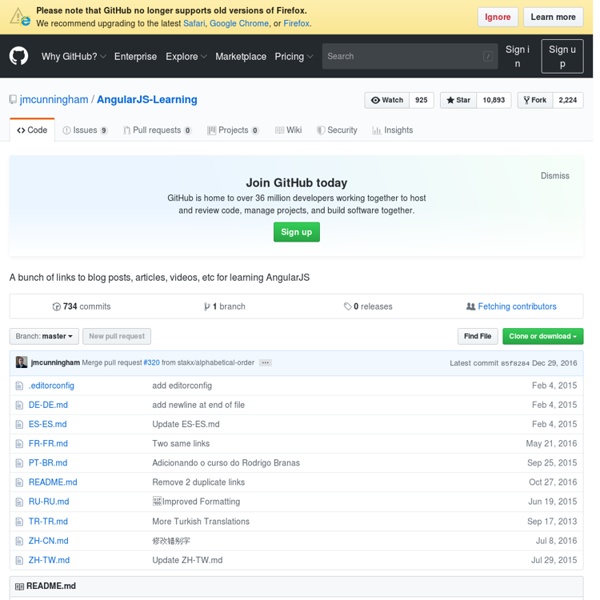Jmcunningham/AngularJS-Learning

JSbooks - free javascript books
Learn AngularJS with the AngularJS Tutorial Screencasts and eBook - Thinkster
jQuery Validation Plugin | Form validation with jQuery
An Introduction to AngularJS Forms Validation
Realtime Web Apps with AngularJS and Firebase
Build Apps with AngularJS
This guide gets you started building Chrome Apps with the AngularJS MVC framework. To illustrate Angular in action, we'll be referencing an actual app built using the framework, the Google Drive Uploader. The source code is available on GitHub. The Google Drive Uploader allows users to quickly view and interact with files stored in their Google Drive account as well as upload new files using the HTML Drag and Drop APIs. It's a great example of building an app which talks to one of Google's APIs; in this case, the Google Drive API. Note: You can also build apps which talk to 3rd party APIs/services that are OAuth2-enabled. The Uploader uses OAuth2 to access the user's data. Key features this app uses: All Chrome Apps require a manifest.json file which contains the information Chrome needs to launch the app. A stripped down version of the Uploader's manifest looks like this: The most important parts of this manifest are the "oauth2" and "permissions" sections. Template laid out. Woot!
Best Practices · angular/angular.js Wiki
Related: Anti-Patterns Namespace distributed code You shouldn't worry about prefixing internal code, but anything you plan to OpenSource should be namespaced The ng- is reserved for core directives.Purpose-namespacing (i18n- or geo-) is better than owner-namespacing (djs- or igor-)Checkout ui-alias to remove 3rd party prefixesOnly use .$broadcast(), .
Related:
Related:



